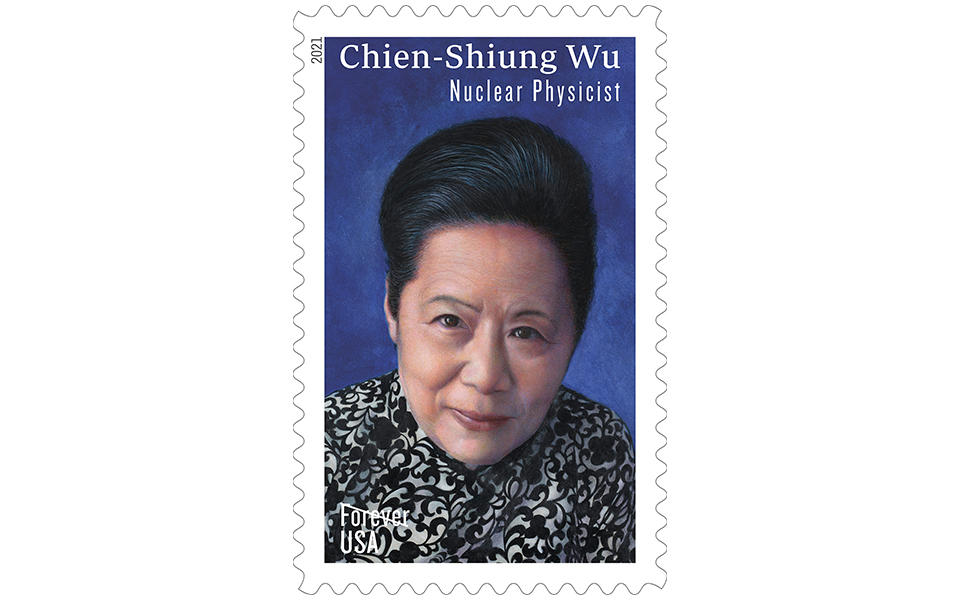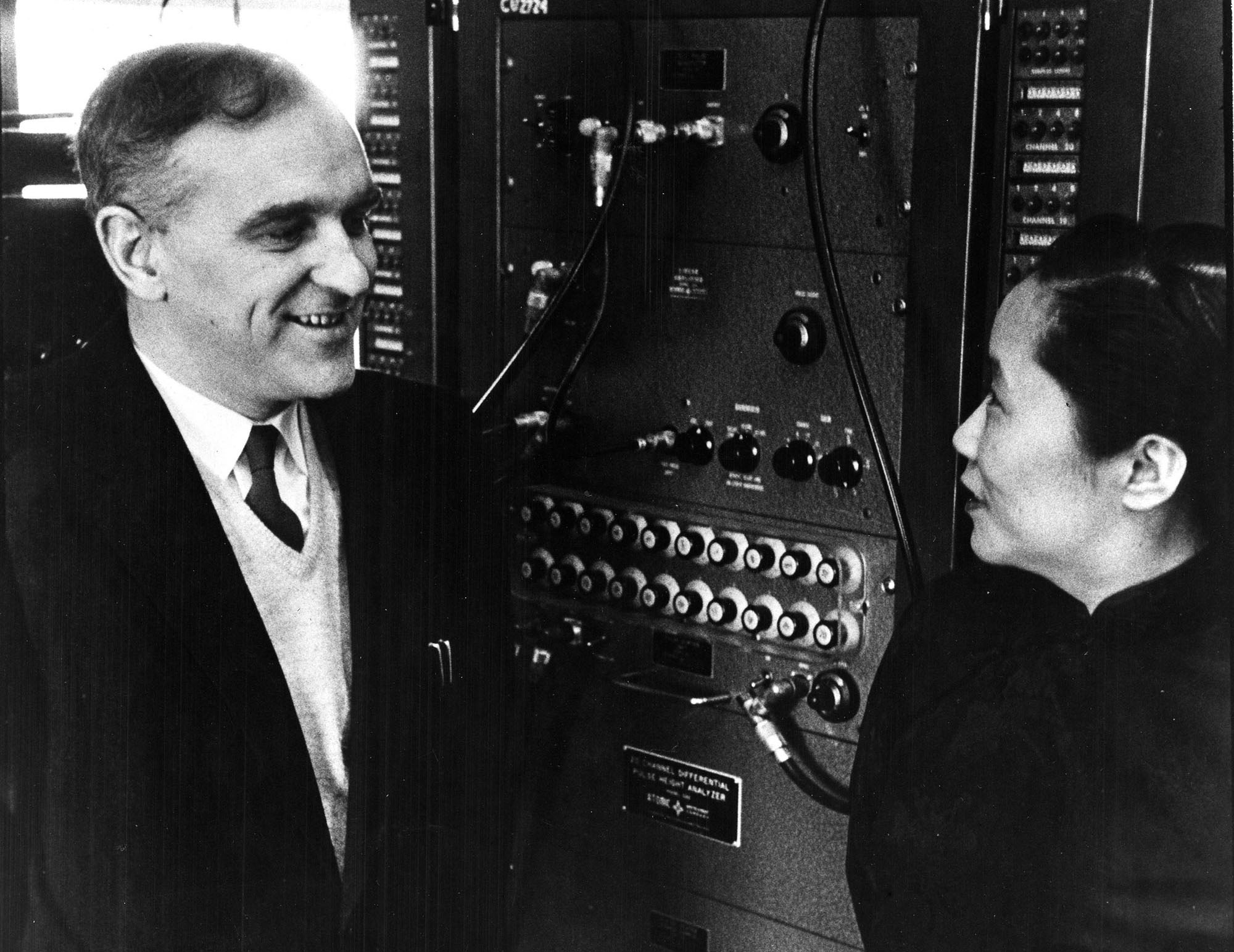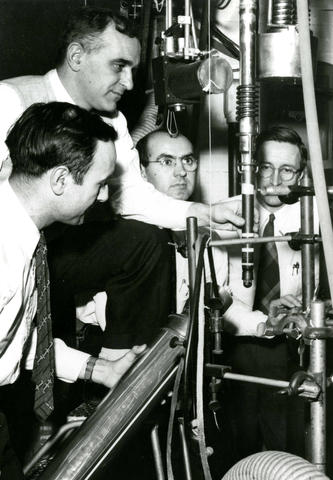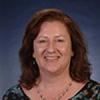Taking Measure
Just a Standard Blog

The new stamp, which shows C.S. Wu wearing a high-collared traditional Chinese gown known as a qipao.
With a new “forever” stamp honoring "First Lady of Physics" Chien-Shiung Wu, we have come very close to seeing a National Institute of Standards and Technology (NIST) researcher on a U.S. postage stamp. Over the course of six months in 1956, Wu worked with researchers Ernest Ambler (who went on to become NIST director in the 1970s and ’80s), Raymond W. Hayward, Dale D. Hoppes and Ralph P. Hudson to carry out one of the most famous experiments in NIST’s history. Of course, NIST researchers have been up to many good things since then, but the Fall of Parity experiment carried out in collaboration with Wu still ranks high. The team’s findings, made in the quiet week after Christmas 1956, shattered a concept of nuclear physics that had been universally accepted for 30 years.
How did Wu, a professor at Columbia University, and the NIST researchers come together? Since the 1920s, physicists had accepted the concept of conservation of parity, which implied that nature is symmetrical at subatomic levels. Researchers made all their observations fit this theory, even though no experiments had solidly confirmed it. In early 1956, theoretical physicists T.D. Lee and C.N. Yang questioned parity conservation, arguing that asymmetry of the weak force in subatomic particles would explain some mystifying measurements and resolve a conflict in the then-accepted theory of subatomic particles. They published a paper suggesting ways of testing for parity violation. Lee mentioned these ideas to Wu, his fellow professor at Columbia, before Lee and Yang's paper was published.
For the 50th anniversary of the parity experiment, T.D. Lee presented a 2005 colloquium at NIST’s Maryland campus, where he read a published account of Wu’s reaction to his and Yang’s ideas. Wu and her husband were planning to attend a conference in Geneva, Switzerland, and then travel to East Asia (she had come to the U.S. from China 20 years earlier). Lee read Wu’s words out loud: “Our passages were booked on the Queen Elizabeth before I suddenly realized that I had to do the experiment immediately, before the rest of the physics community recognized the importance of this experiment and did it first.”
Wu searched for a low-temperature lab that could host the test. Cryogenics was a hot topic at the time, but low-temperature labs such as those at Oak Ridge National Laboratory and the Netherlands’ Leiden University were extremely busy with their own work. And because parity conservation was a completely ingrained belief, she faced some ambivalence — the feeling that the tests would be a waste of time.
Wu reached out to NIST, then known as the National Bureau of Standards, at a lucky moment when its low-temperature lab was between big projects. In a Q&A panel discussion at the end of Lee’s NIST colloquium, Hudson (leader of the cryogenics section at the time of the experiment) said they realized Wu, who had worked on the Manhattan Project, was tops in her field and that this was an inquiry to take very seriously. Echoing today’s cost-consciousness, their boss, Ferdinand Brickwedde, gave the go-ahead as long as it didn’t cost any money. Ambler, in a NIST oral history interview, said, “We went for it very hard. We didn't mess around. It wasn’t a part-time job. It was a lot of hard work. … As to the actual experiment itself, I talked to some of the senior physicists at the Bureau and they all shook their heads and said, ‘It’s a very, very, very long shot.’”

They worked as a team, with Wu sending grad students to NIST’s headquarters (then still located in Washington, D.C.) and periodically traveling there herself. In the oral history, Ambler noted the division of labor: “She contributed to the beta particle detection side of it and the counting side of it, and so, of course, did Hayward [a theoretical nuclear physicist] and Hoppes [a grad student and later leader of the NIST radioactivity group]. We [Ambler and Hudson] contributed the low-temperature side of it and all that know-how. It was a joint effort, one that everybody worked very hard on.”
They ran into problems. Nearly 50 years later, Hoppes described their very clumsy equipment. For example, the glass joints on the cryostat were sealed with a mixture of glycerin and detergent (Palmolive, and later Ivory!) and kept leaking. It took 6-8 hours to warm up, re-grease and cool the cryostat again, so Hoppes slept in the lab near the device — both to save time and to let team members know when they needed to come back to the lab. He said, “It was an outrageous experiment to try and it’s surprising that it worked!”
On Dec. 27, 1956, the team hit pay dirt. To put their findings in exceedingly simplified terms: If parity were conserved, cobalt-60 nuclei “spinning” in one direction would release electrons in the exact same way if their “spins” were reversed. Instead, the team measured a difference. More electrons came out of one "end" of the atoms than the other in the experiment, meaning parity was not conserved.
Theorists thought there would likely be very little difference when the direction of atomic spin changed. Instead, the NBS team recorded results that were, in Wu’s words, “reproducible and huge” — a great deal more electrons coming from one side than the other.
Before publishing, they needed to be sure of the accuracy of their result, and the pressure was on because researchers at Columbia were ready to publish on the same topic. Wu traveled to NIST and was very hesitant to accept the results. At about 2 a.m. on Jan. 9, 1957, the team was finally convinced and realized it was time to celebrate. T.D. Lee quoted Wu’s words at the NIST colloquium: “Dr. Hudson smilingly opened his drawer and pulled out a bottle of wine and put it on the table with a few small paper cups. We finally drank to the overthrow of the law of parity.” According to Ralph Hudson, the bottle of wine he opened was a Chateau Lafite Rothschild, vintage 1949.

Their paper “Experimental Test of Parity Conservation in Beta Decay” was published in the Feb. 15, 1957, issue of Physical Review — and just in the nick of time. The very next paper in that issue is the findings from the team at Columbia that almost scooped them.
T.D. Lee and C.N. Yang shared the 1957 Nobel Prize in Physics for their theoretical work that led to the discovery of parity violation. Wu and the NIST team were overlooked despite conducting the experiment that proved the theory. Wu’s important role was eventually recognized with the inaugural Wolf Prize in 1978. The NIST researchers won no Nobel or Wolf prizes for their work, but they were awarded the Department of Commerce Gold Medal in 1957, the NIST Samuel Wesley Stratton Award, and the Franklin Institute Award.
While their role wasn’t widely recognized, the NIST team and Wu changed the world of physics. In a Feb. 5, 2021, article in Science commemorating the Wu postage stamp, MIT physicist and historian of science David Kaiser describes how their discovery set the stage for the development of modern particle theory.
For that, I think they all deserve their faces on a stamp!
When that happens, they’ll join other NIST greats who have been honored on postage stamps. NIST Nobel laureate Dave Wineland is featured on a stamp from Mozambique. Dan Shechtman, who won a Nobel for discovering quasicrystals while at NIST, wins the quantity prize in the stamp category: Guinea, Mozambique, Mali and Israel have honored him with postage stamps.






most interesting, physic, quantum physic I recall all those names in past lifetime reads 😳 quantum mechanics was and is mind bending.